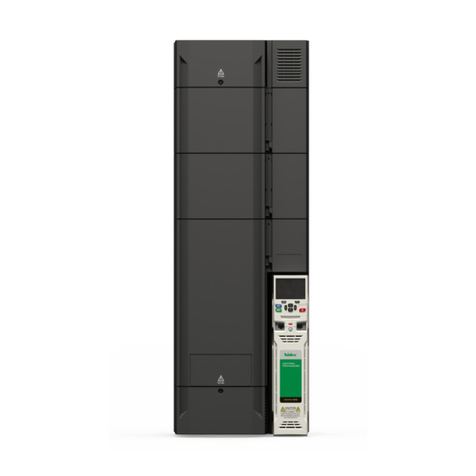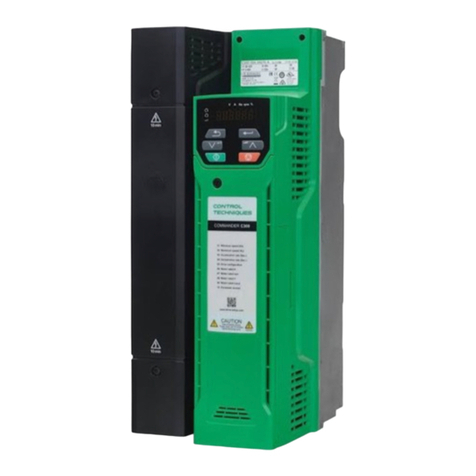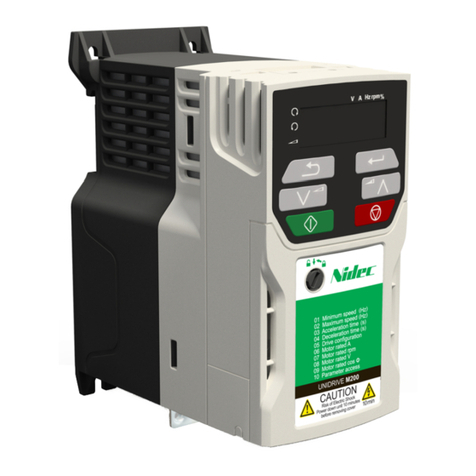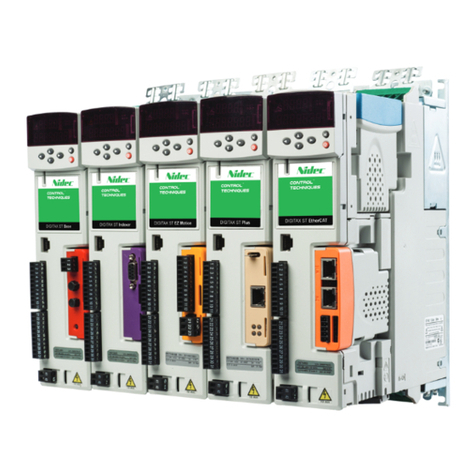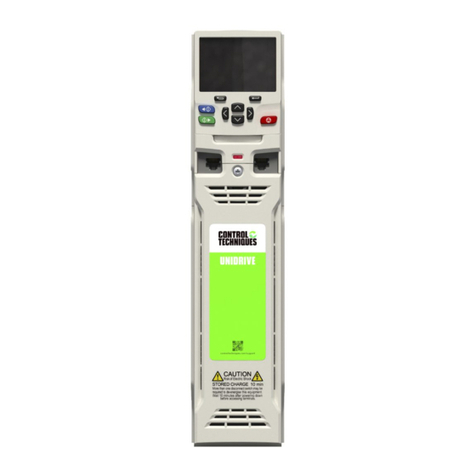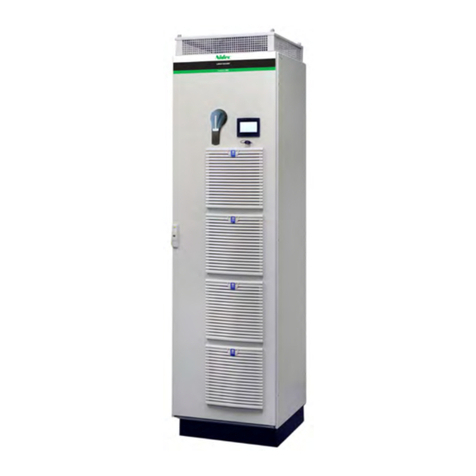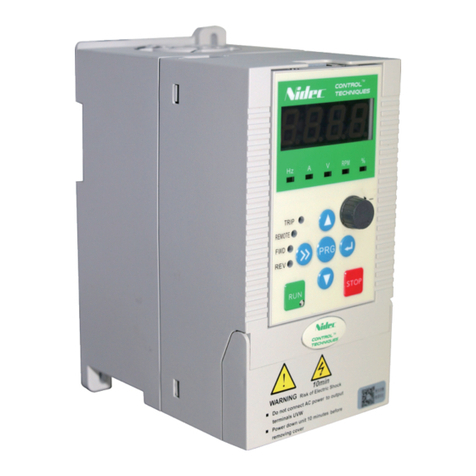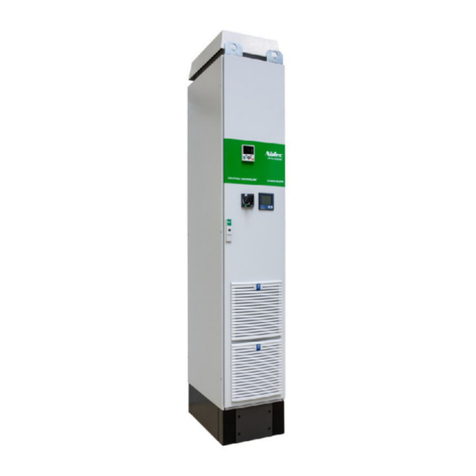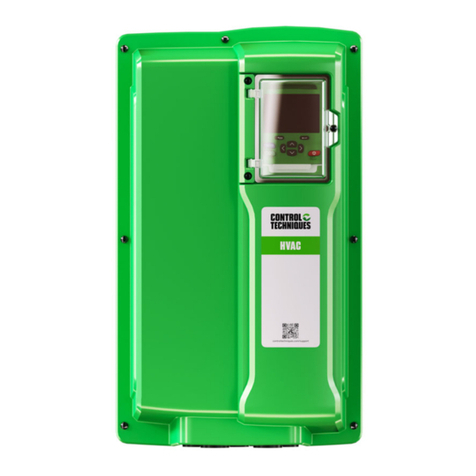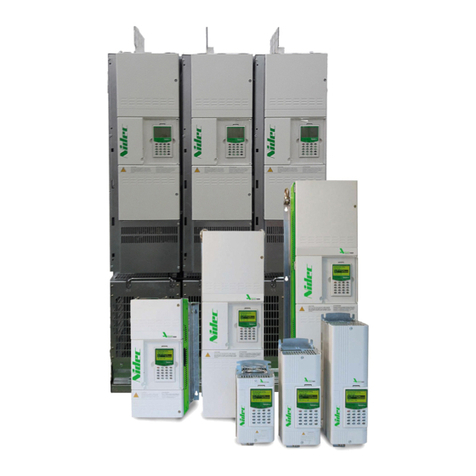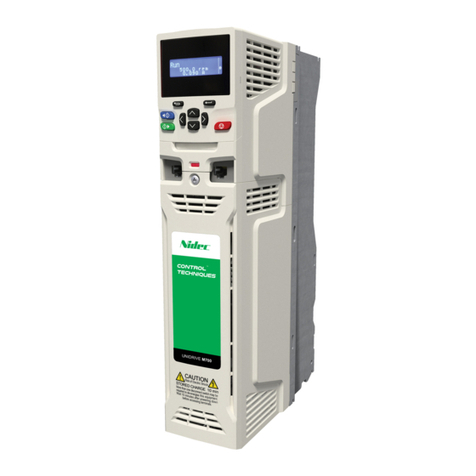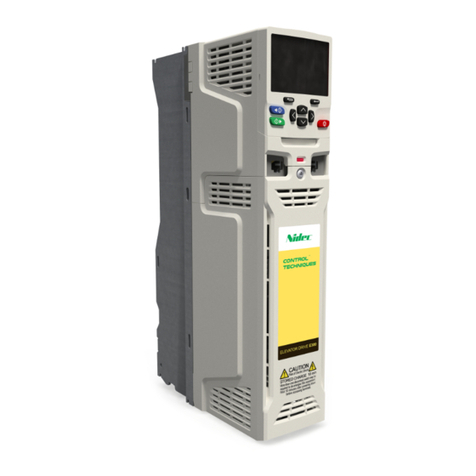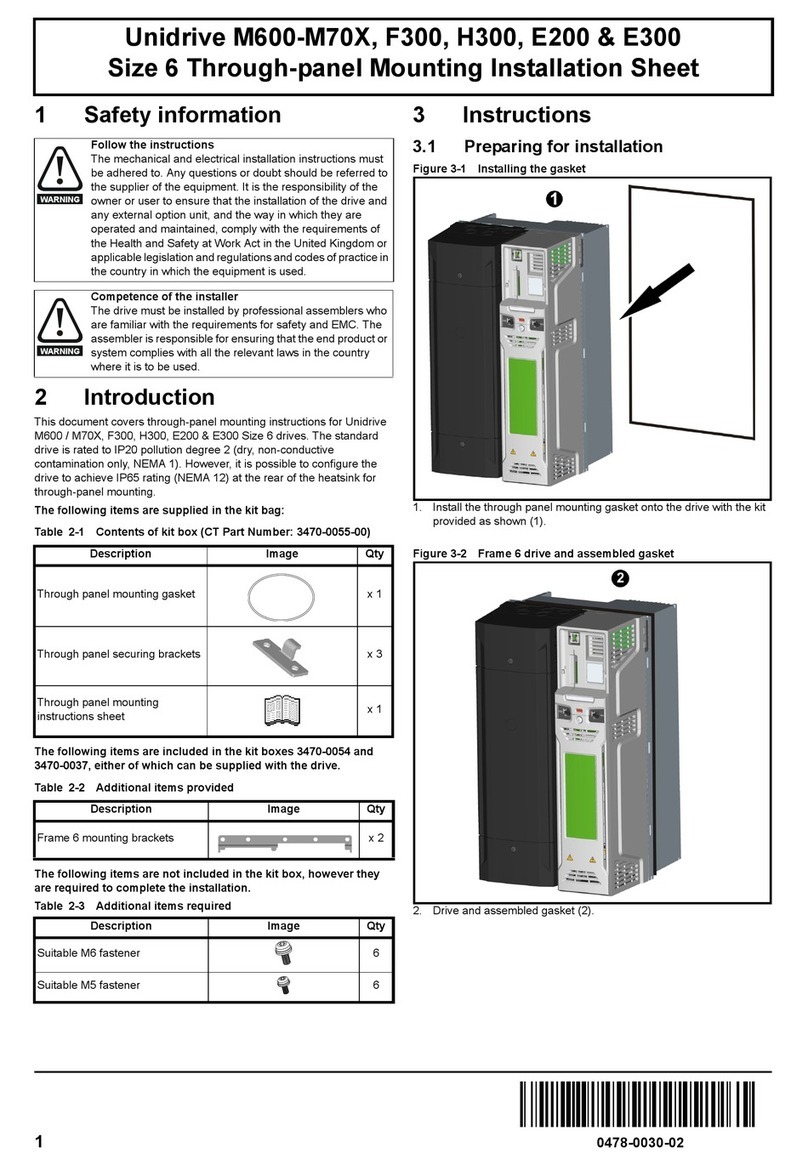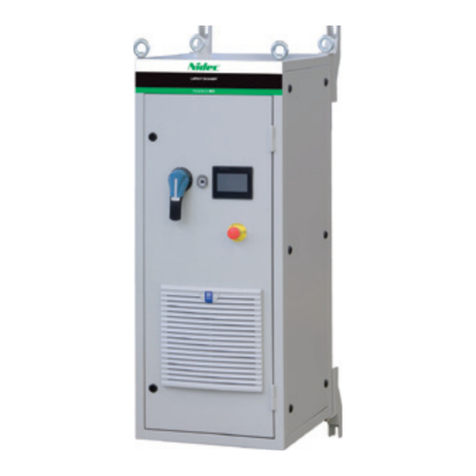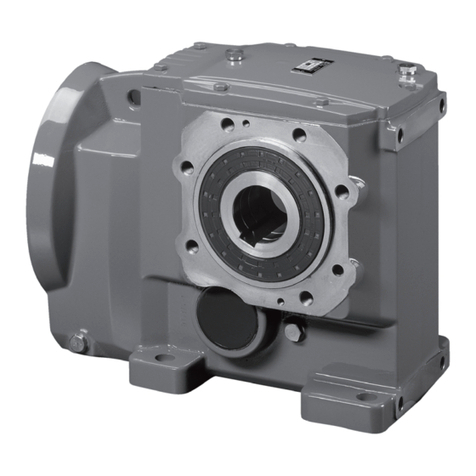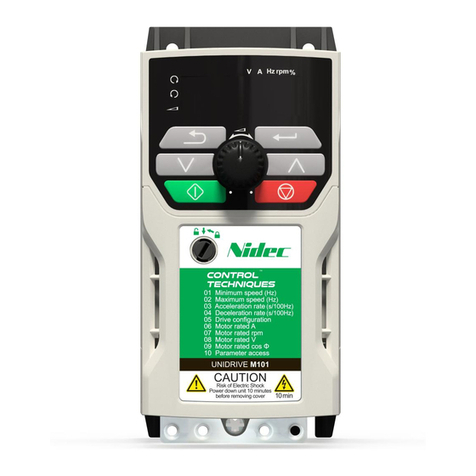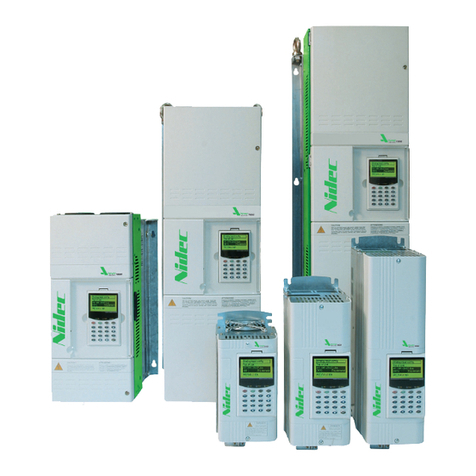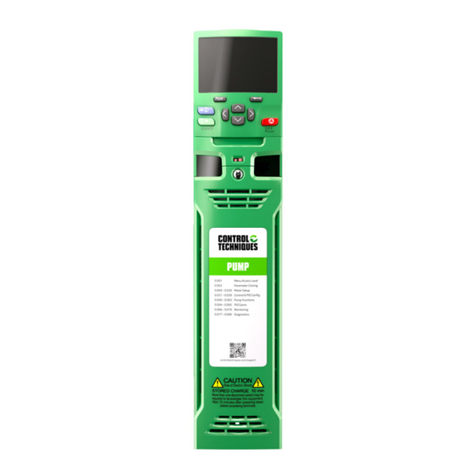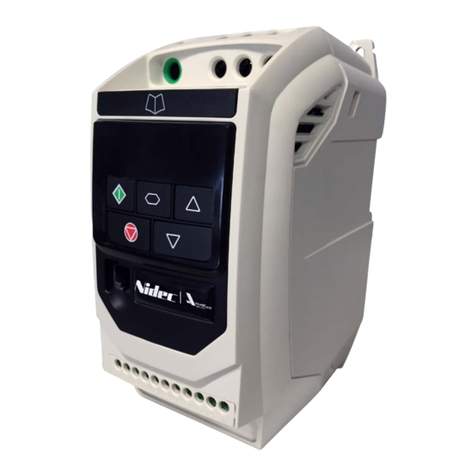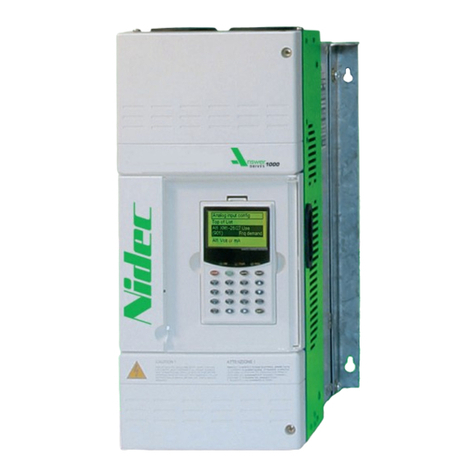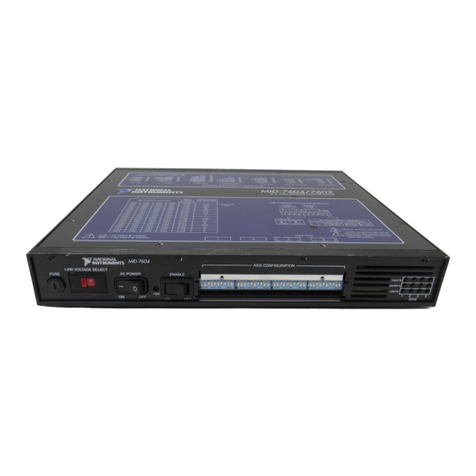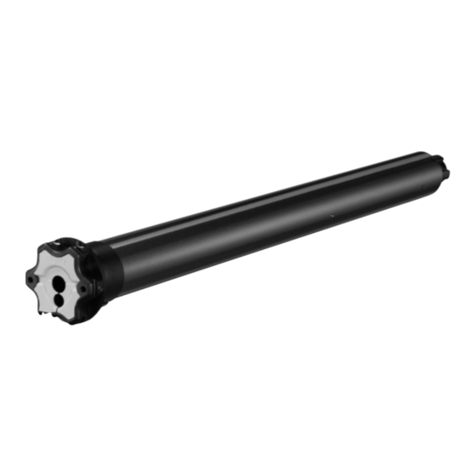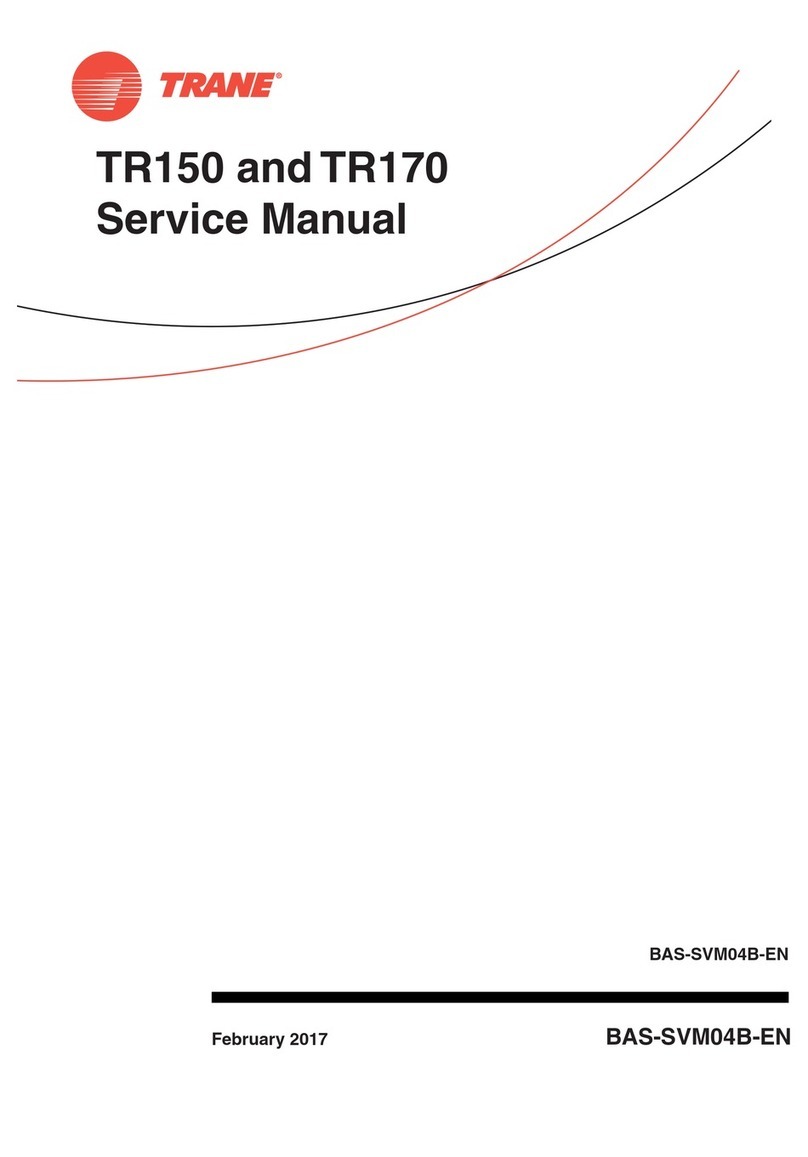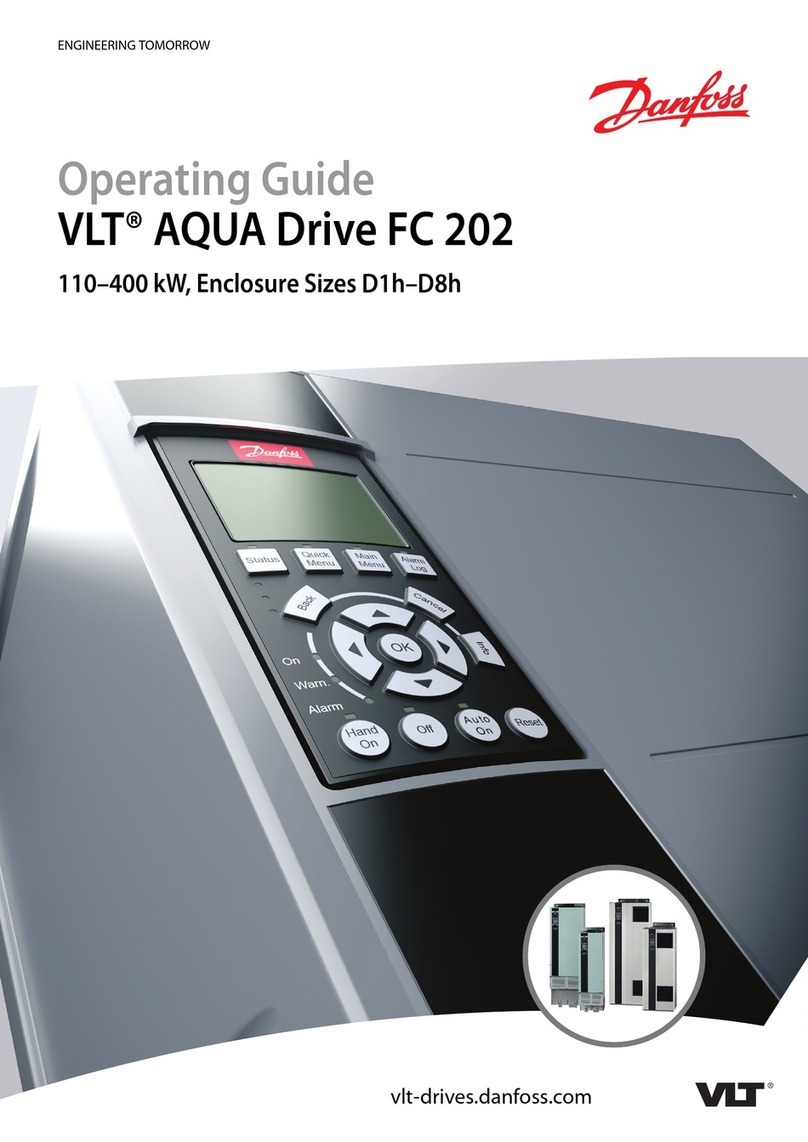1
Safety information
1.1 Warnings, Cautions and Notes
NOTE
A Note contains information which helps to ensure correct operation of
the product.
1.2 General information
This guide applies to products which control electric motors either
directly (drives) or indirectly (controllers, option modules and other
auxiliary equipment and accessories). In all cases the hazards
associated with powerful electrical drives are present, and all safety
information relating to drives and associated equipment must be
observed.
Specific warnings are given at the relevant places in this guide.
Drives and controllers are intended as components for professional
incorporation into complete systems. If installed incorrectly they may
present a safety hazard. The drive uses high voltages and currents,
carries a high level of stored electrical energy, and is used to control
equipment which can cause injury. Close attention is required to the
electrical installation and the system design to avoid hazards either in
normal operation or in the event of equipment malfunction. System
design, installation, commissioning/start-up and maintenance must be
carried out by personnel who have the necessary training and
competence. They must read this safety information and this guide
carefully.
1.3 Responsibility
It is the responsibility of the installer to ensure that the equipment is
installed correctly with regard to all instructions given in this guide.
They must give due consideration to the safety of the complete system,
so as to avoid the risk of injury both in normal operation and in the event
of a fault or of reasonably foreseeable misuse.
The manufacturer accepts no liability for any consequences resulting
from inappropriate, negligent or incorrect installation of the equipment.
1.4 Compliance with regulations
The installer is responsible for complying with all relevant regulations,
such as national wiring regulations, accident prevention regulations and
electromagnetic compatibility (EMC) regulations. Particular attention
must be given to the cross-sectional areas of conductors, the selection
of fuses or other protection, and protective ground (earth) connections.
This guide contains instructions for achieving compliance with specific
EMC standards.
All machinery to be supplied within the European Union in which this
product is used must comply with the following directives:
2006/42/EC Safety of machinery. 2014/30/EU: Electromagnetic
Compatibility.
1.5 Electrical hazards
The voltages used in the drive can cause severe electrical shock and/or
burns and could be lethal. Extreme care is necessary at all times when
working with or adjacent to the drive. Hazardous voltage may be present
in any of the following locations:
•
AC and DC supply cables and connections
•
Output cables and connections
•
Many internal parts of the drive, and external option units
Unless otherwise indicated, control terminals are single insulated and
must not be touched.
The supply must be disconnected by an approved electrical isolation
device before gaining access to the electrical connections.
The STOP function of the drive does not isolate dangerous voltages
from the output of the drive or from any external option unit.
The drive must be installed in accordance with the instructions given in
this guide. Failure to observe the instructions could result in a fire
hazard.
1.6 Stored electrical charge
The drive contains capacitors that remain charged to a potentially lethal
voltage after the AC supply has been disconnected. If the drivehas been
energized, the AC supply must be isolated at least ten minutes before
work may continue.
1.7 Mechanical hazards
Careful consideration must be given to the functions of the drive or
controller which might result in a hazard, either through their intended
behaviour or through incorrect operation due to afault. Inany application
where a malfunction of the drive or its control system could leadto
or allow damage, loss or injury, a risk analysis must be carried out,
and where necessary, further measures taken to reduce the risk -
for example, an over-speed protection device in case of failure of the
speed control, or a fail-safe mechanical brake in case of loss of motor
braking.
The system designer is responsible for ensuring that the complete
system is safe and designed correctly according to the relevant safety
standards.
The design of safety-related control systems must only be done by
personnel with the required training and experience. The system must
be subject to a risk assessment to confirm that the residual risk of an
unsafe event is at an acceptable level for the application.
1.8 Access to equipment
Access must be restricted to authorized personnel only. Safety
regulations which apply at the place of use must be complied with.
1.9 Environmental limits
Instructions in this guide regarding transport, storage, installation and
use of the equipment must be complied with, including the specified
environmental limits. This includes temperature, humidity,
contamination, shock and vibration. Drives must not be subjected to
excessive physical force.
1.10 Hazardous environments
The equipment must not be installed in a hazardous environment
(i.e. a potentially explosive environment).
